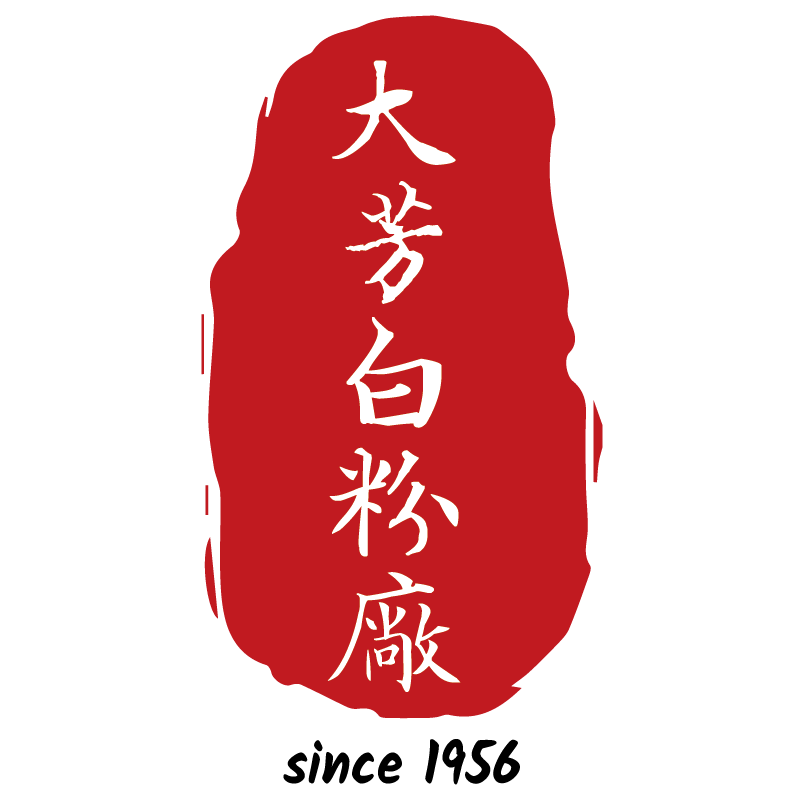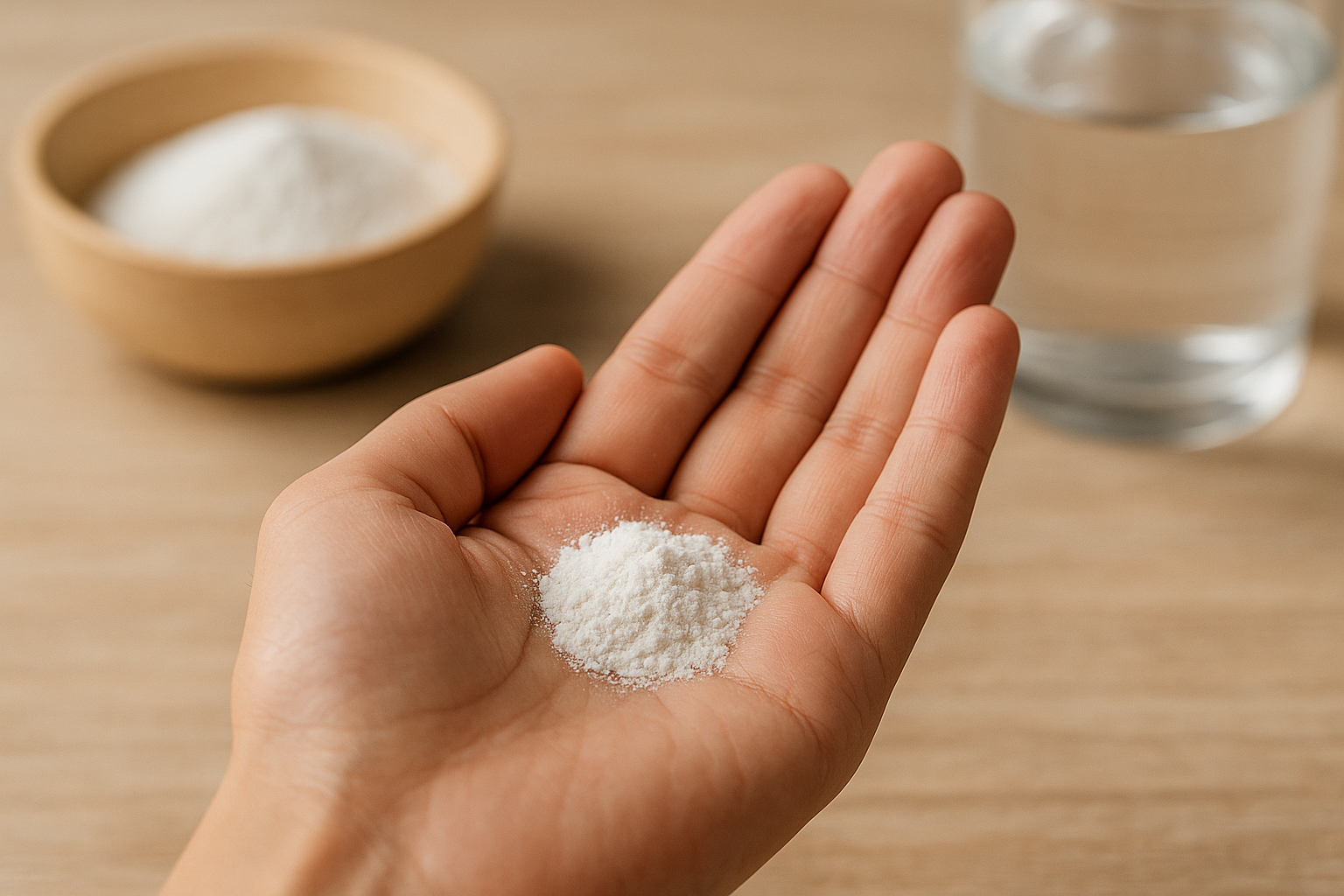—中文版本(繁體)—
摘要泡腳,是許多人在家中就能輕鬆享受的放鬆方式,而搭配天然白磺湯花溫泉粉,更能帶來獨特的溫泉體驗。本篇將提供完整的泡腳攻略,從水溫設定、時間安排、使用方法到注意事項,幫助你在家安心享受溫泉粉泡腳的樂趣,同時遵守科學與安全原則,讓體驗既舒適又安心。
為什麼選擇溫泉粉泡腳?
溫泉粉泡腳的最大優勢在於便利性與穩定品質。相較於直接前往溫泉區,在家使用溫泉粉泡腳不受天氣、地點限制,隨時都能準備一盆溫暖的水,享受來自北投硫磺谷的白磺泉體驗。
天然白磺湯花溫泉粉的特色:
天然礦物結晶:萃取自白磺泉源頭,保留珍稀「湯花」。
穩定保存:乾燥粉末型態,不受季節或保存條件影響品質。
使用方便:用量可控,適合各種容器大小。
關鍵字:溫泉粉泡腳、天然泡澡粉、湯花、北投溫泉、硫磺粉、泡腳粉
泡腳的理想水溫
水溫是影響泡腳體驗的關鍵之一。過熱可能造成皮膚乾燥或不適,過涼則效果不佳。
建議溫度範圍:38°C–42°C
冬季可偏高至 41–42°C,夏季可調低至 38–39°C
使用溫度計測量,避免憑感覺倒入過熱的水
若是第一次泡腳,可先從 38°C 開始,逐漸調整至適合的溫度
LSI 關鍵字:泡腳水溫、泡腳最佳溫度、安全泡腳溫度
推薦泡腳時間與頻率
泡腳時間與頻率因人而異,重點是適度與持之以恆。科學觀察顯示,適當的時間有助於達到放鬆與促進循環的效果。
每次時間:15–20 分鐘為佳
每週頻率:2–4 次
避免飯後立即泡腳,至少間隔 30 分鐘
睡前泡腳建議提前 30–60 分鐘,讓身體有時間調整
溫泉粉泡腳步驟詳解
步驟 1:準備容器
選擇深度可浸到腳踝以上的桶盆,最好保溫效果佳,避免水溫快速下降。
步驟 2:調製溫泉水
倒入約 4–6 公升的熱水(依桶盆大小調整)
加入天然白磺湯花溫泉粉:
小包裝(7g):1 包或半包
中包(20g):分 4–5 次使用
大包(70g):每次 1–2 湯匙
攪拌至溫泉粉均勻分散,部分湯花不溶解屬正常現象
步驟 3:開始泡腳
將雙腳放入水中,保持水溫在建議範圍,必要時可添加熱水維持溫度。
步驟 4:結束後的保養
用清水沖洗雙腳,避免礦物殘留過久造成乾燥感
輕輕擦乾並塗抹保濕乳液
收拾器具並倒掉用過的溫泉水
支援關鍵字:足浴、泡腳粉用法、溫泉粉正確使用
礦物成分與物理作用
白磺粉含有硫化氫、硫酸鹽、鈣、鎂、鉀、鈉等多種礦物質。這些元素在熱水中釋放後,會與足部皮膚接觸並透過溫熱效應促進循環。硫化氫帶有特殊氣味,來自天然地熱反應,鈣與鎂離子則與肌肉放鬆和神經傳導有關,鉀與鈉離子平衡則有助於維持皮膚滲透壓。這些作用雖非藥效,但在物理層面能帶來舒適感。
不同族群泡腳建議
高壓上班族:下班後泡腳可搭配薰衣草或洋甘菊精油,幫助放鬆情緒與提升睡眠品質。
長者:水溫建議 37–38°C,避免過熱引發血壓波動,可同時進行輕度足部按摩促進循環。
運動後族群:40–42°C 泡腳 10–15 分鐘,有助放鬆肌肉,建議先休息 30 分鐘再進行。
女性經期前後:可使用偏溫暖的水(39–40°C)減少冰冷感,但避免經期大量出血時長時間泡腳。
延伸應用與情境搭配
四季應用:冬季適度提高溫度延長時間,夏季可改為短時間的微溫泡腳搭配薄荷精油。
芳香療法:依心情選擇不同精油,如檸檬草提神、玫瑰舒緩。
搭配音樂與燈光:柔和燈光與輕音樂可讓泡腳變成放鬆儀式。
常見迷思與安全提醒
迷思 1:泡越久越好?
錯。過久可能導致血壓下降與頭暈,建議 15–20 分鐘。迷思 2:泡腳可治病?
應以保養與放鬆為主,非醫療手段。迷思 3:孕婦可泡腳嗎?
應先諮詢醫師,並控制水溫與時間。
常見問題(FAQ)
Q1:泡腳時湯花沉澱正常嗎?
A1:正常,湯花是天然礦物結晶,不完全溶解代表保留了原始成分。
Q2:泡腳後腳會有硫磺味嗎?
A2:會有淡淡白磺味,屬天然礦物氣味。
Q3:夏天泡腳會太熱嗎?
A3:可降至 38°C,仍能享受放鬆感。
Q4:可以每天泡嗎?
A4:建議每週 2–4 次即可。
差異化重點
科學與安全導向:強調水溫、時間與正確用量
在地故事:白磺湯花來自北投硫磺谷
實用性高:步驟+用量對照表方便操作
建議 SEO TAG
溫泉粉泡腳、泡腳方法、足浴技巧、白磺湯花、北投溫泉粉、泡腳時間、水溫建議、泡腳注意事項
Meta 資訊
Title:溫泉粉泡腳全攻略|水溫時間用量一次看懂
Description:完整解析溫泉粉泡腳的安全水溫、建議時間與正確用法,從準備到保養全步驟,讓你在家安心享受北投白磺湯花的泡腳體驗。
延伸閱讀
天然白磺湯花溫泉粉 vs 一般入浴劑:差在哪?真正礦物質功效一次搞懂
為什麼天然溫泉粉這兩年突然爆紅?白磺粉與原湯的差別、功效與正確泡法一次搞懂
—English Version—
For English readers, please scroll down for the translated version
The Ultimate Foot Soak Guide with White Sulfur Spring Powder: From Water Temperature to Timing, Safe and Effective Soaking Tips
Introduction
Foot soaking is one of the simplest yet most rewarding self-care routines you can enjoy at home. In Taiwan’s Beitou district, a region famous for its natural white sulfur hot springs, locals have been using White Sulfur Spring Powder—also called natural hot spring bath powder or hot spring minerals—to recreate a soothing spa experience right in their homes.
This guide covers everything you need to know about foot baths with white sulfur spring powder—from choosing the right water temperature and soak duration to understanding how to store and use the powder safely. Whether you’re a hot spring enthusiast, a wellness seeker, or simply curious about traditional Taiwanese bathing culture, you’ll find practical, science-backed tips here.
H2: What Is White Sulfur Spring Powder?
White sulfur spring powder is a concentrated natural mineral product made from crystallized hot spring “flowers” (湯花) sourced from genuine Beitou white sulfur springs. The process is traditional: large volumes of natural sulfur-rich hot spring water are slowly evaporated to produce small amounts of mineral crystals, which are then carefully dried and packaged.
Origin: Beitou Hot Springs, Taipei, Taiwan
Type: White sulfur hot spring (slightly acidic, with trace minerals like sulfur, calcium, magnesium)
Usage: Dissolved in warm or cool water for soaking feet, bathing, or spa treatments
Difference from Bath Salts: Unlike synthetic bath salts or fragrances, white sulfur spring powder is purely natural with no artificial additives.
H2: Why Foot Soaks? A Cultural and Wellness Tradition
In East Asia, foot soaking is more than just hygiene—it’s a cultural ritual.
Historical Roots: In Taiwan and Japan, foot baths (足湯) are common in public hot springs, offering relaxation and social connection.
Convenience: A foot soak at home requires less water and energy than a full-body bath, making it eco-friendly and accessible.
Seasonal Adaptation: In summer, cool water foot baths help refresh the body; in winter, warm water soaks provide comfort.
H2: Preparing Your Foot Soak
H3: Step 1 – Choose the Right Container
Use a deep basin or foot spa machine that allows water to cover your feet up to the ankles.
Materials like ceramic, wood, or medical-grade plastic are preferred to retain heat.
H3: Step 2 – Measure the White Sulfur Spring Powder
Standard use: 7–10 grams per soak (about one flat spoonful).
If you’re using single-serving packs, simply use one packet.
Without a scale, visually measure about a heaping teaspoon.
H3: Step 3 – Water Temperature
Warm Soak: Ideal range is 38–42°C (100–108°F) for most people.
Cool Soak: For summer refreshment, use room-temperature water.
Test with your hand before starting to ensure comfort and safety.
H3: Step 4 – Dissolve the Powder
Sprinkle the powder evenly over the water surface and stir until fully dissolved.
The water may turn slightly milky with a faint mineral scent—this is normal.
H2: Recommended Soaking Time
General guideline: 15–20 minutes for warm soaks, 10–15 minutes for cool soaks.
Avoid exceeding 30 minutes to prevent skin dryness.
If you feel lightheaded or overheated, stop immediately and rest.
H2: Safety Guidelines
Skin Sensitivity: If you have very sensitive skin, try a patch test before a full soak.
Children & Elderly: Use lower water temperatures and shorter soak durations.
Pregnancy: Consult a healthcare provider before use.
Storage: Keep powder sealed, in a cool, dry place, away from sunlight.
H2: Common Mistakes to Avoid
Using Too Much Powder – More is not always better; stick to recommended amounts.
Overheating Water – Extremely hot water may cause discomfort or skin irritation.
Skipping Rinse After Soak – A quick rinse with clean water helps remove excess minerals.
Not Drying Feet Properly – Always dry feet thoroughly to prevent moisture buildup.
H2: Comparing White Sulfur Spring Powder with Regular Bath Additives
| Feature | White Sulfur Spring Powder | Synthetic Bath Salts / Fragrance Soaks |
|---|---|---|
| Source | 100% natural mineral from Beitou hot springs | Often lab-made with fragrances and dyes |
| Scent | Mild, natural sulfur aroma | Artificial perfumes |
| Additives | None | Commonly contains foaming agents or colors |
| Mineral Benefits | Naturally occurring sulfur, calcium, magnesium | Depends on formulation, may lack real minerals |
H2: Seasonal Foot Soak Tips
Summer: Use cooler water to refresh and reduce discomfort from heat.
Winter: Warm soaks before bed can help you feel more relaxed and comfortable.
Rainy Season: Keep feet clean and dry after soaking to avoid moisture-related issues.
H2: FAQ – Frequently Asked Questions
Q1: Can I use white sulfur spring powder daily?
A: Generally yes, but 2–4 times a week is sufficient for most people.
Q2: Is the sulfur smell normal?
A: Yes, the mild mineral scent is a natural characteristic of white sulfur hot springs.
Q3: Can I reuse the soak water?
A: No, it’s best to use fresh water and powder for each soak.
Q4: Can I mix it with essential oils or herbs?
A: Yes, but add them after the powder has fully dissolved.
Q5: Does the water color mean anything?
A: Slight cloudiness or a pale yellow hue is normal due to natural minerals.
Meta Information
Title: The Ultimate Guide to Foot Soaks with White Sulfur Spring Powder – Safe & Effective Tips
Description: Discover how to enjoy a safe and effective foot soak with Beitou’s natural white sulfur spring powder. Learn about water temperature, soaking time, and proper use.
Keywords: White Sulfur Spring Powder, Hot Spring Foot Bath, Taiwan Beitou Hot Spring, Sulfur Bath Powder, Foot Soak Guide
Further reading
Is Hot Spring Powder Effective? A Scientific Look at Beitou's White Sulfur Bath Experience
Natural Sulfur Spring Powder vs. Common Bath Additives
Why Has Onsen Powder Suddenly Become So Popular?
—日本語版—
白硫黄湯花温泉粉の足湯完全ガイド:水温から時間まで、安全で効果的な浸かり方
はじめに
足湯は、自宅で簡単にできるセルフケアの一つです。台湾・北投地区は、天然の白硫黄温泉で有名で、現地の人々は白硫黄湯花温泉粉(天然温泉入浴粉、温泉ミネラルパウダーとも呼ばれる)を使い、自宅で温泉気分を楽しんでいます。
本ガイドでは、白硫黄湯花温泉粉を使った足湯の方法を、水温や浸かる時間、安全な保管や使用方法まで詳しく解説します。温泉好き、ウェルネス志向の方、あるいは台湾の入浴文化に興味がある方にとって、役立つ科学的かつ実用的な情報をお届けします。
H2: 白硫黄湯花温泉粉とは?
白硫黄湯花温泉粉は、北投温泉で湧き出る硫黄分を含む温泉水から採取される結晶「湯花」を濃縮・乾燥させた天然ミネラル製品です。大量の温泉水をゆっくりと蒸発させ、わずかな鉱物結晶を得るという伝統的な方法で作られます。
産地:台湾・台北市北投温泉
泉質:白硫黄泉(弱酸性、硫黄、カルシウム、マグネシウムなどの微量ミネラルを含む)
用途:足湯、入浴、スパトリートメント用にお湯や水に溶かす
バスソルトとの違い:合成香料や着色料を使用した入浴剤とは異なり、天然ミネラルのみで構成されています。
H2: 足湯の文化と魅力
東アジアにおける足湯は、衛生管理以上の意味を持ちます。
歴史的背景:台湾や日本では、足湯(足湯場)は温泉街の公共施設として親しまれ、交流やリラクゼーションの場となっています。
手軽さ:全身浴に比べて必要なお湯の量が少なく、省エネで手軽に行えます。
季節対応:夏は常温水で爽快感を、冬は温水で心地よさを得られます。
H2: 足湯の準備方法
H3: ステップ1 – 容器の選択
くるぶしまでお湯が浸かる深さの桶やフットバス機を使用します。
陶器、木製、医療用プラスチックなど、保温性の高い材質がおすすめです。
H3: ステップ2 – 白硫黄湯花温泉粉の計量
標準量は1回あたり7~10g(平らなスプーン1杯程度)
個包装タイプは1袋をそのまま使用
計量器がない場合は、山盛り小さじ1杯を目安に
H3: ステップ3 – 水温の設定
温水足湯:38~42℃が目安
冷水足湯:夏のリフレッシュには常温水がおすすめ
開始前に手で温度を確認し、快適で安全な温度に調整
H3: ステップ4 – 粉の溶解
粉を水面全体に均等に振り入れ、完全に溶けるまでかき混ぜます。
水はやや白濁し、ほのかなミネラルの香りがします。これは天然成分による正常な現象です。
H2: 浸かる時間の目安
温水足湯:15~20分
冷水足湯:10~15分
30分を超えないようにし、肌の乾燥や疲労を避けます。
めまいや過熱感を感じたら、すぐに中止して休憩しましょう。
H2: 安全に楽しむためのポイント
肌の敏感な方:事前にパッチテストを推奨
子ども・高齢者:低めの温度と短めの時間で
妊娠中:使用前に医療専門家へ相談
保存方法:直射日光や湿気を避け、密封して保管
H2: よくある間違い
粉の入れすぎ – 多ければ効果が高いわけではありません
過熱 – 高すぎる温度は不快感や肌トラブルの原因に
足湯後にすすがない – ミネラル残留を避けるため軽くすすぎを
乾燥不足 – 足をよく乾かさないと湿気による不快感が残ります
H2: 他の入浴剤との比較
| 項目 | 白硫黄湯花温泉粉 | 合成バスソルト・香料入浴剤 |
|---|---|---|
| 原料 | 北投温泉由来の天然ミネラル | 人工香料や着色料を含む場合あり |
| 香り | 自然な硫黄の香り | 人工的な香り |
| 添加物 | 無添加 | 発泡剤や着色料を使用 |
| ミネラル成分 | 硫黄、カルシウム、マグネシウムなど天然由来 | 製品によるが含有しない場合も多い |
H2: 季節別足湯の楽しみ方
夏:冷水足湯で爽快感を得る
冬:就寝前の温水足湯で心地よく過ごす
梅雨:足湯後はしっかり乾かし、清潔を保つ
H2: FAQ – よくある質問
Q1: 毎日使えますか?
A: 一般的には可能ですが、週2~4回が目安です。
Q2: 硫黄の香りは正常ですか?
A: はい、白硫黄温泉特有の自然な香りです。
Q3: 足湯の水は再利用できますか?
A: 新しいお湯と粉を毎回使いましょう。
Q4: 精油やハーブを混ぜてもいいですか?
A: はい、粉が完全に溶けた後に加えてください。
Q5: 水の色は意味がありますか?
A: 白濁や淡黄色は天然ミネラルによるもので正常です。
メタ情報
タイトル:白硫黄湯花温泉粉の足湯ガイド – 安全で効果的な使い方
説明:北投の天然白硫黄温泉粉で足湯を安全に楽しむ方法を解説。水温、時間、準備手順まで詳しく紹介。
キーワード:白硫黄湯花温泉粉、足湯、北投温泉、硫黄泉、温泉粉、フットバス
さらに読む


